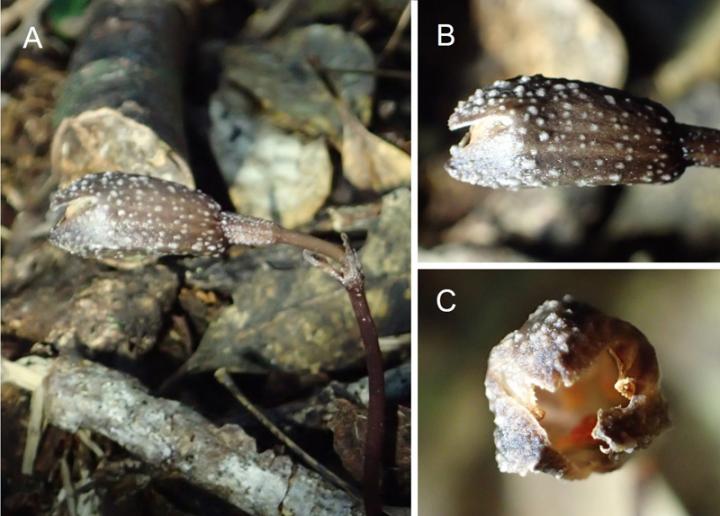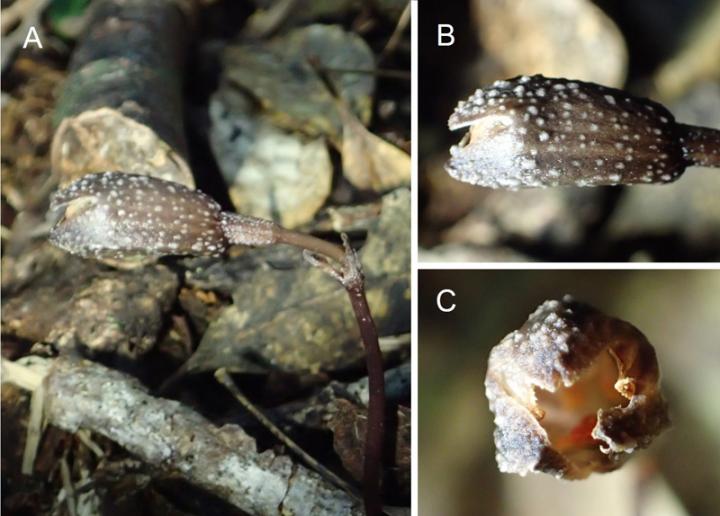
Credit: Kenji Suetsugu
Two new species of parasitic plants have been discovered on the main island of Okinawa, Japan. The discovery was made by Project Associate Professor SUETSUGU Kenji (Kobe University Graduate School of Science), who named them Gastrodia nipponicoides and Gastrodia okinawensis. Details of these findings were published online in Phytotaxa on April 7.
Plants' ability to photosynthesize is often taken as one of their defining features. However, some species choose instead to live a parasitic existence, attaching to the hyphae of fungi and exploiting them for nutrients. These plants are known as mycoheterotrophs. Since they don't engage in photosynthesis, they only appear above ground during the brief period when they are in fruit or flowering. In addition, many of the species are small, making them very hard to find. Even in Japan, one of the most advanced countries in the world in documenting its flora, many mycoheterotrophs remain unclassified. Professor Suetsugu is one of those involved in documenting their distribution and classification.
Professor Suetsugu discovered the two species in March 2012 on the main island of tropical Okinawa, during a joint field survey with independent botanical researchers Mr. NAKAMA Masakazu, Ms. WATANABE Tazuko, and Mr. WATANABE Hiromitsu. This group continued to examine the plants with additional support from independent researchers Mr. TOMA Tsugutaka, Mr. ABE Atsushi (researcher at the Okinawa Churashima Foundation), and Professor MORIGUCHI Mitsuru (Okinawa University Faculty of Humanities).
Their investigation revealed that both species are related to Gastrodia nipponica of the Orchidaceae family, but they can be distinguished by differences in the "lips" on their petals and in the column (an organ found in orchids that fuses the male and female parts, the stamen and the pistil).
The plants were recorded as new species and named Gastrodia nipponicoides and Gastrodia okinawanesis. G. nipponicoides reaches 3-6cm in height with 1-4 blackish brown flowers, each about 15mm long (see figure 1). G. okinawanesis is taller at 10-17cm, with 1-4 light brown flowers, each about 20mm in length (see figure 2).
Mycoheterotrophs live a parasitic existence within forest ecosystems. As parasites, they can only survive in rich, stable ecosystems with resources to spare. The existence of these species is evidence of far-reaching underground ecosystems that include a network of fungi that cannot be seen by the naked eye. Last year the Yanbaru forests were designated as the Yanbaru National Park, and the discovery of these two species further demonstrates the importance of this habitat.
###
Media Contact
Eleanor Wyllie
[email protected]
@KobeU_Global
http://www.kobe-u.ac.jp/en/
############
Story Source: Materials provided by Scienmag





